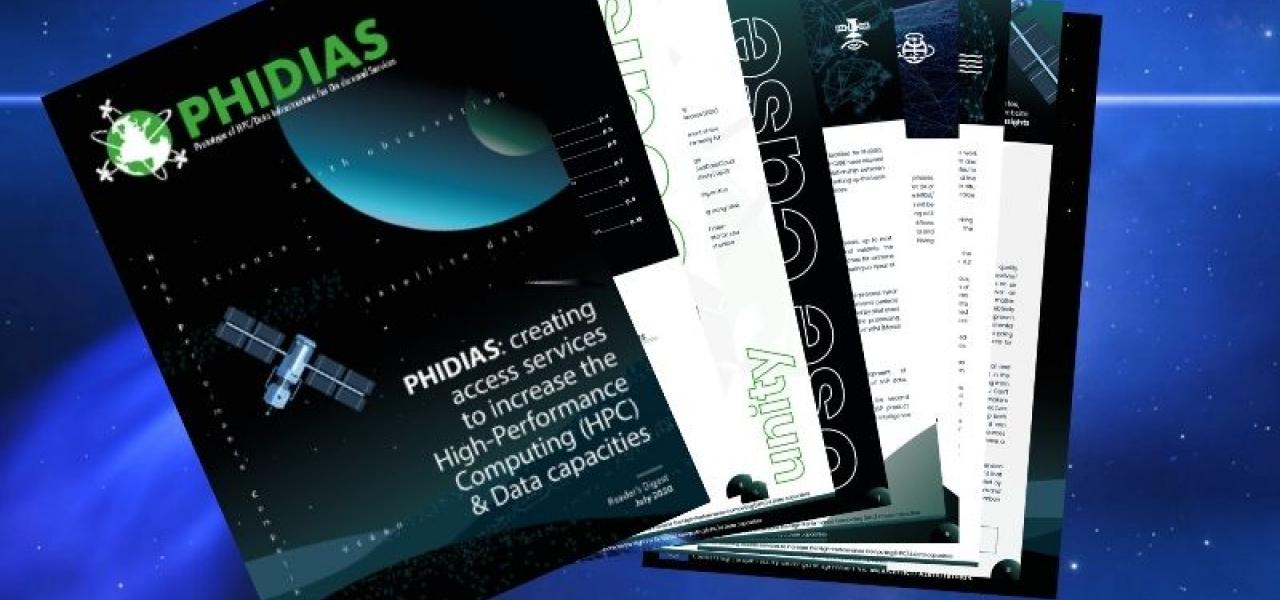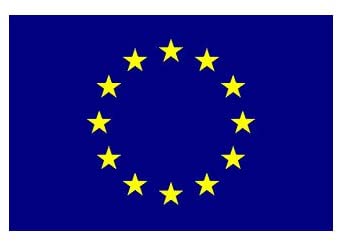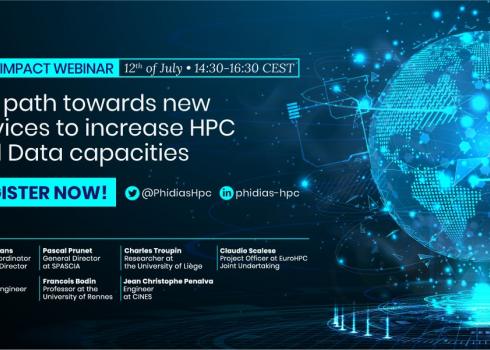PHIDIAS Reader’s Digest - Creating access services to increase HPC & Data capacities
The PHIDIAS project has published its first Reader's Digest. This issue outlines the key activities and latest developments of the PHIDIAS Use Cases in this initial phase of implementation.
The PHIDIAS project, funded by the European Union's Connecting Europe Facility (CEF), aims to become a reference point for the Earth Science community enabling a more effective discovery, management and process of spatial and environmental data, through the development of a set of the High-Performance Computing-based services and tools exploiting large satellite datasets.
PHIDIAS foresees the development of three use cases over the lifetime of the project:
- Intelligent screening of a large amount of satellite data for detection and identification of anomalous atmospheric composition events.
- Processing on-demand services for environmental monitoring.
- Improving the use of cloud services for marine data management.
"With the efficient support of the consortium, I am working to ensure that the PHIDIAS objectives are being consistently pursued, to deliver a catalogue that will implement interoperable services for the discovery, access and processing of data, guaranteeing the largest degree of reusability of data as possible, and the improvement of the FAIRisation of satellite and environmental datasets. Essentially, paving the way and making life easier for the next generation of HPC and the Computational Scientific community."
Boris Dintrans, Director of CINES and PHIDIAS project coordinator
Among the impacts that PHIDIAS expects to achieve are the following:
- Creating sustainable HPC data-powered services for the earth, atmospheric and marine data which researchers, industry and public sectors could benefit from;
- Leveraging networking infrastructures to ensure end-to-end scientific workflows;
- Federating infrastructure to infrastructure services, including authentication and access to resources (pre- and post-processing, management and preservation of large volumes of digital information over time);
- Creating a FAIR portal for the scientific community and data providers.
The document provides key information about the three Use Cases, latest developments and plan in the coming months, demonstrating how PHIDIAS enables cross-disciplinary research. Additionally, the full alignment of its goals with the current EU policies is specifically highlighted with a view to effectively address societal impacts in terms of overall environmental monitoring capabilities enabled by the polling of different stakeholders.
By federating different data sources, PHIDIAS will provide, on one hand, an interoperable and easy to use catalogue of environmental resources (publicly accessible browsable), and, on the other hand, will provide researchers and practitioners with a platform on top of which new knowledge and new business models can be developed.
Input into the reader's digest comes from a vast range of sources, namely the CINES, Trust-IT Services, Use Cases leaders (from SPACIA, IRD & IFREMER) and PHIDIAS Use Cases participating partners such as CNRS, HYGEOS, ICARE and SRON for Use Case 1, GEOMAYTS for Use Case 2, and Université de Liège, Maris, CNRS, CSC and the Finnish Environment Institute for Use Case 3.
Download the digital booklet here.






